
Hey herb gardener, that’s a good-looking culinary herb garden you’ve got there. And is that chamomile and lemon balm for tea?
Nice.
As an avid herb gardener, I’m sure you’ve already read our detailed guide on pruning basil so it will grow into a huge bush. (Yes, a bush of basil.) Large, leafy sage? Easy. You’ve got a massive patch. And you figured out the secrets to growing thyme ages ago.
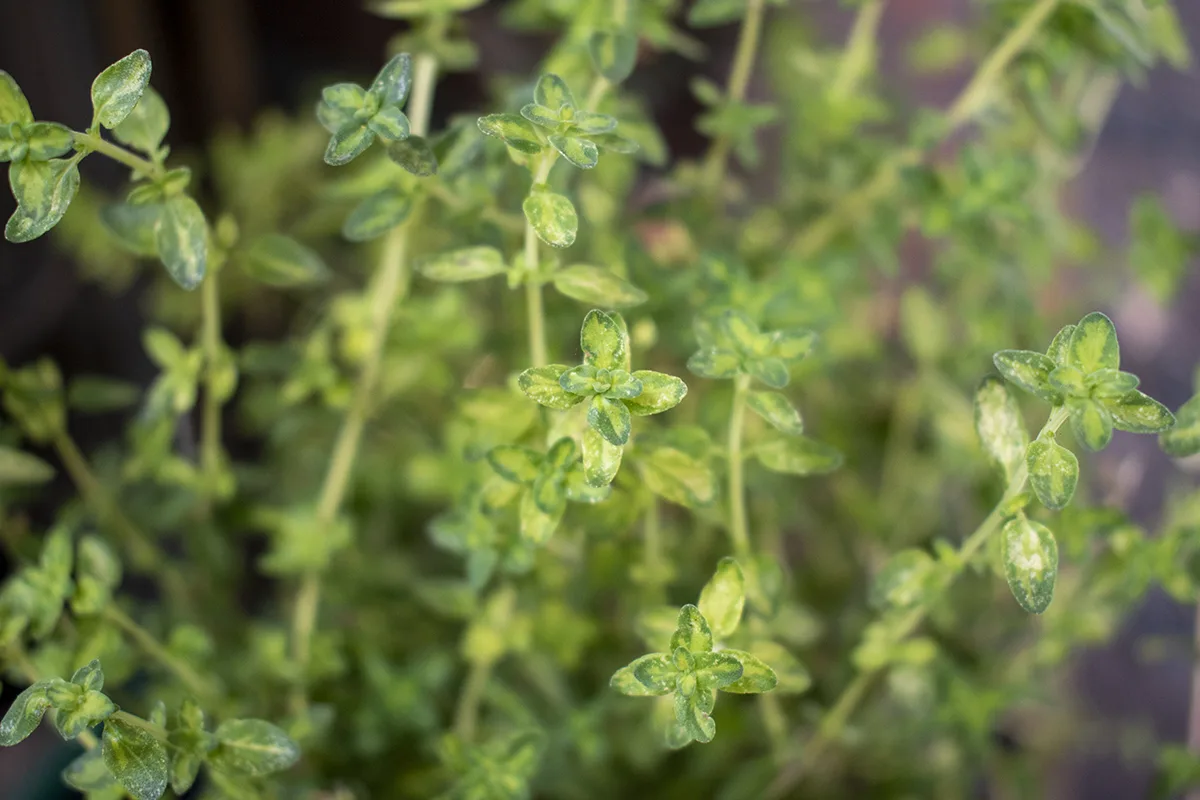
So, what will you do with all those fragrant herbs?
Naturally, you’ll use plenty of them to whip up amazing meals in the kitchen. And if you’ve been growing herbs for a while, you probably dry quite a few. (By the way, have you seen Cheryl’s beautiful and easy-to-make herb drying screen.)
But how often do you look at your amazingly tended herbs and think, “What am I going to do with all of this?”
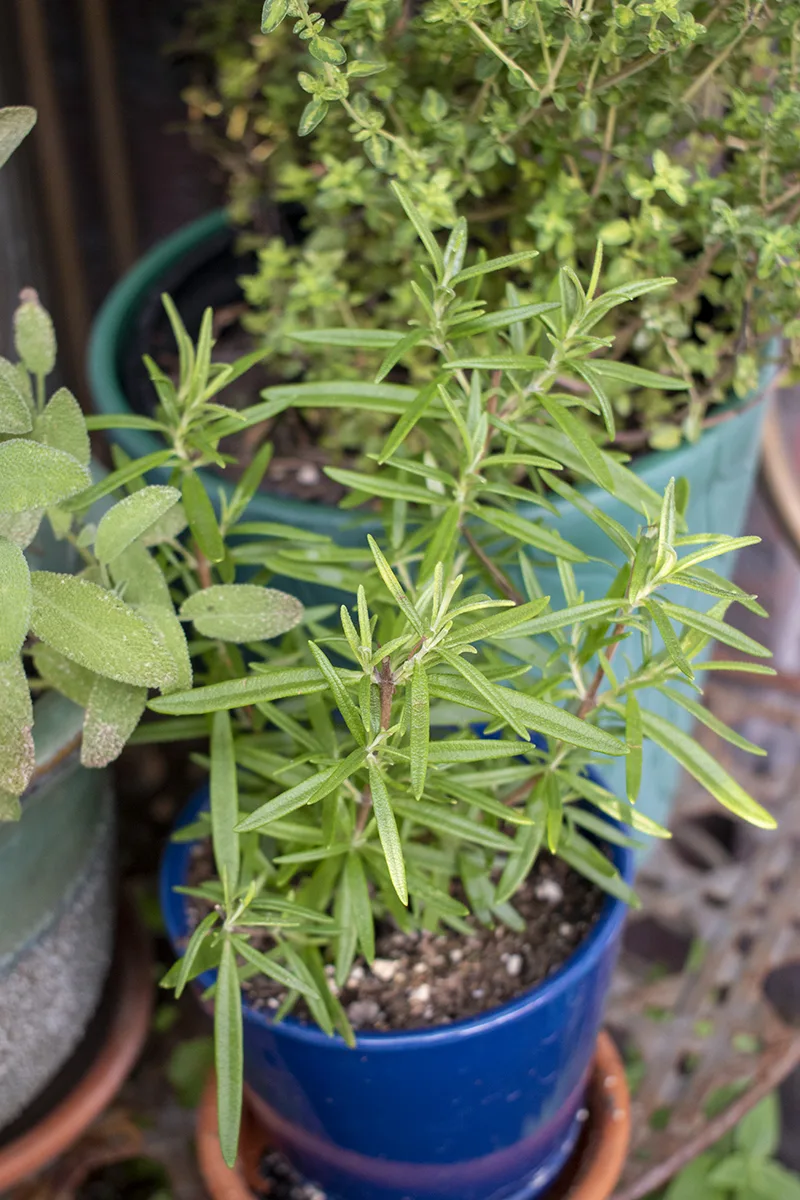
Oh, my friend, I am here to help. We’re going to get fancy in the kitchen today. But lazy.
Lazy Gourmet
I’m going to let you in on a little secret. My friends and family all know me for the amazing stuff I whip up in my kitchen. The word “gourmet” has even been used a few times. (Insert my snort of derision here.) Hardly. That’s just an insult to true chefs. I’ve just become really good at finding the easiest and laziest ways to make food taste great.
That’s my secret.
And one of my favorite things to make food taste great is herbal syrups. The combination of water, sugar, herbs and heat equals a ton of possibilities that are always more impressive than the sum of their parts. The sugar amplifies the flavor of the herbs, making these syrups a great way to add a sweet boost of basil, thyme, lavender, rosemary, etc., to your cooking.
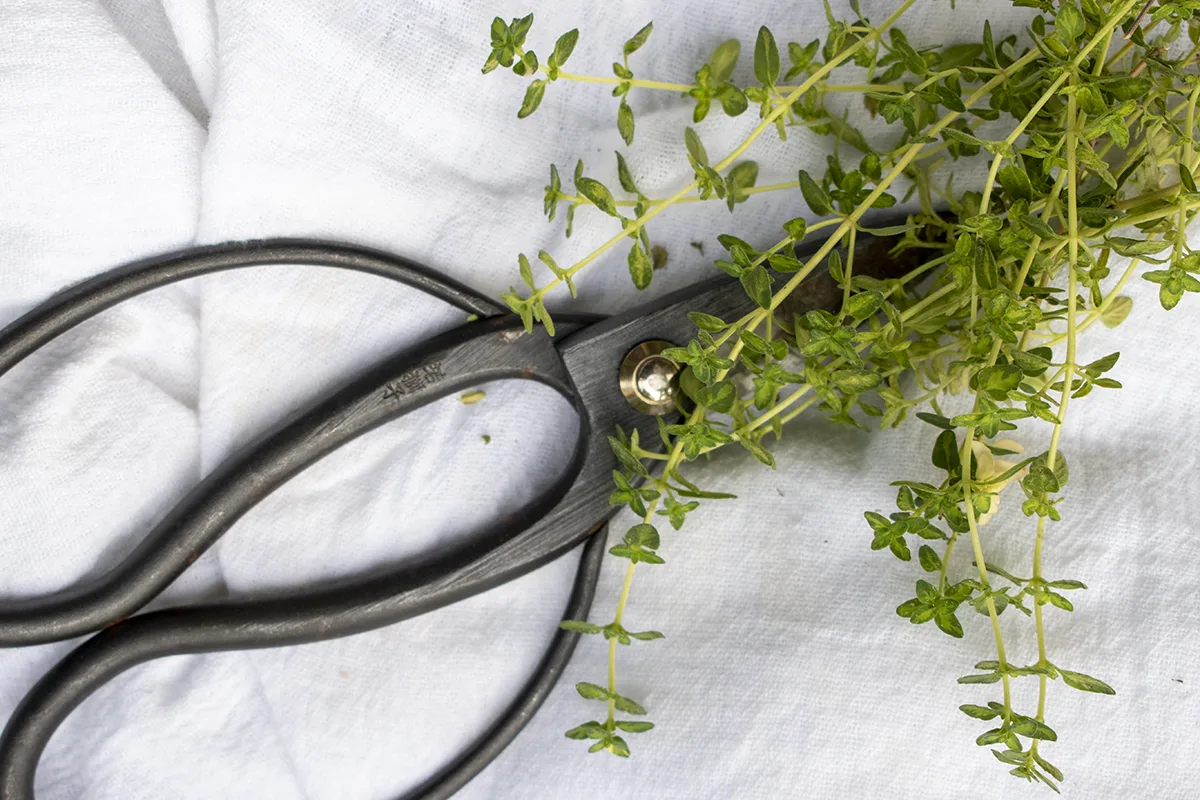
Because, let’s face it, buttercream icing is incredible, but lavender buttercream icing is out of this world.
So, grab your herb snips and head out to the garden; we’re going to make herbal syrups.
Gather Your Ingredients and Tools
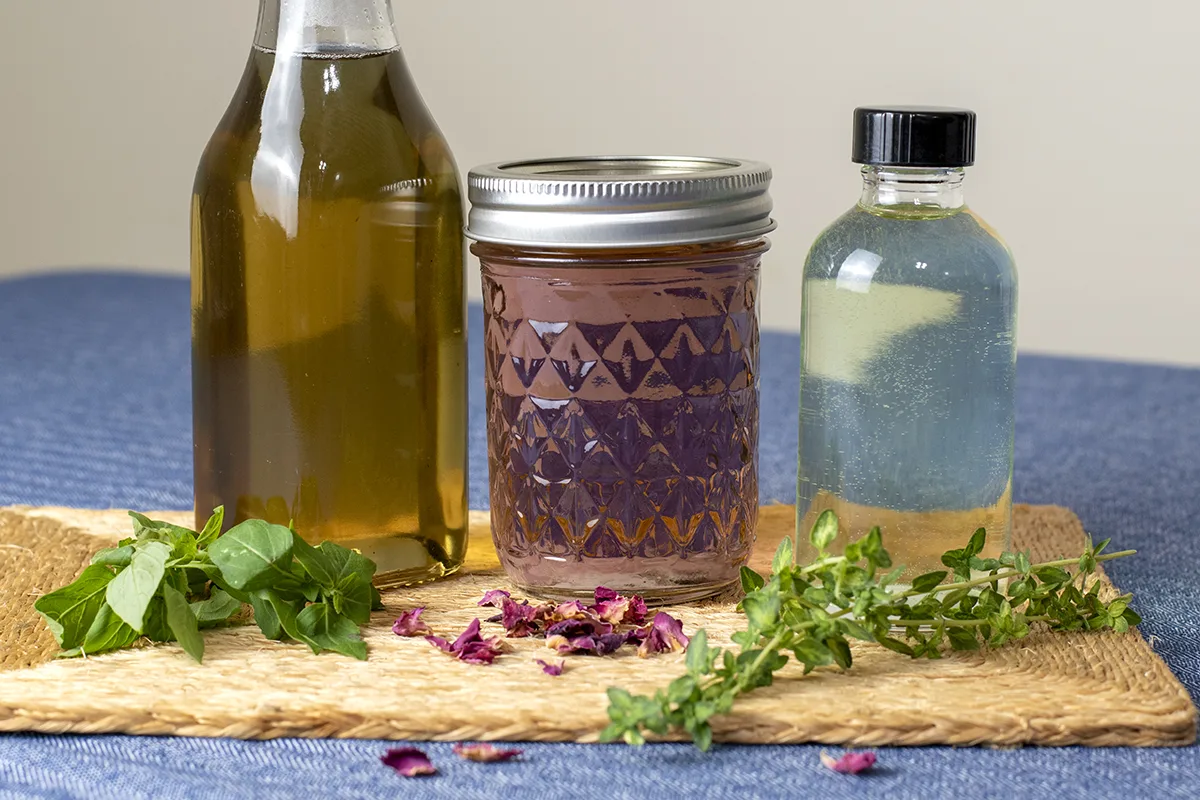
Remember, this is easy, so we don’t need a ton of stuff. It takes a few basic kitchen tools:
- Saucepan with a lid
- Fine mesh strainer
- Something to stir with
- A clean container to store your finished syrup, like a mason jar with a lid
And the ingredients are super simple too:
- Plain old boring white sugar
- Plain old boring water
- Fresh herbs
A note about picking fresh herbs
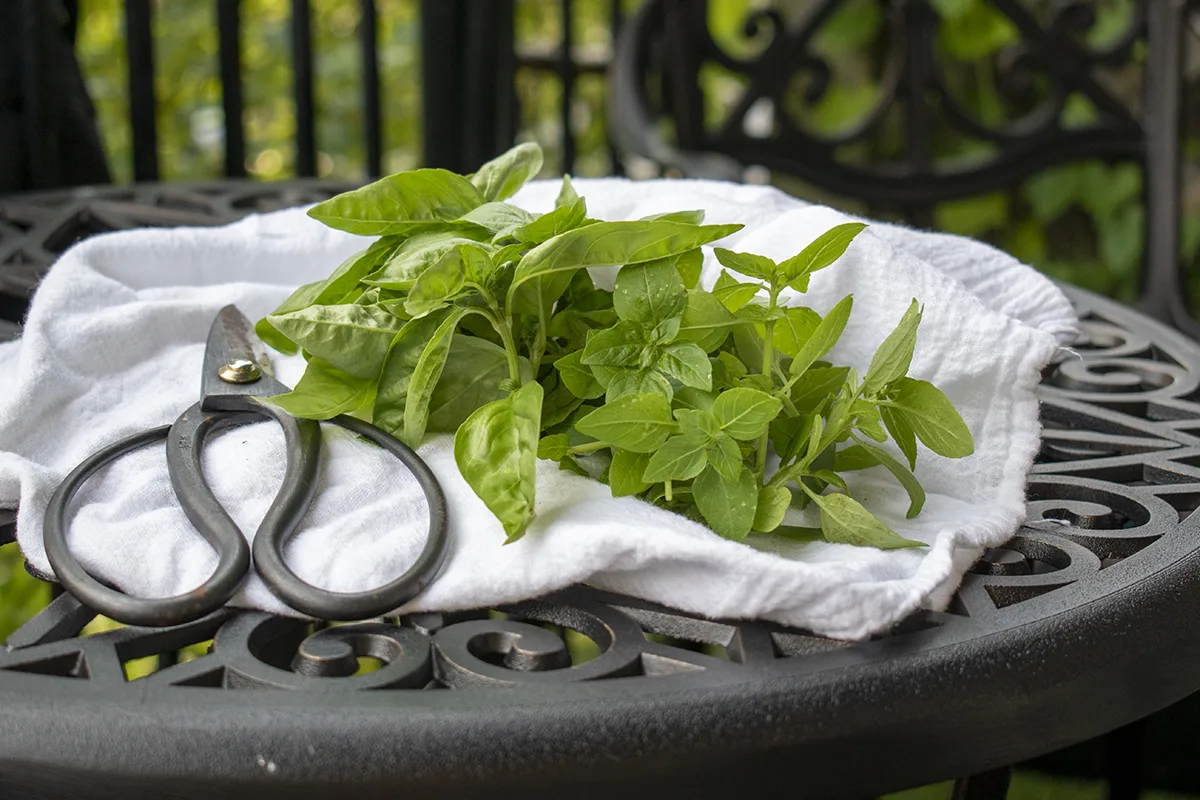
Ideally, the best time to cut herbs for syrups is in the morning before the dew has dried. But unless you’re some Disney princess with fairies and birds to do your bidding, cut the herbs whenever you’re ready to make the syrup.
If you are a Disney princess with fairies and birds to do your bidding, can I borrow a bird or two for my laundry?
Herbal Simple Syrup with Any Herb
The recipe is simple. I use a ratio of 1:1:1 – water to sugar to fresh herbs. Rinse the herbs off with a spray of the hose or in the sink. For soft-stemmed herbs, like basil or mint, pull the leaves off the stems, and pack them lightly into a measuring cup. For woody-stemmed herbs like thyme or rosemary, try to pick still green and springy stems and leave the leaves on the stem, again, packing the measuring cup lightly.
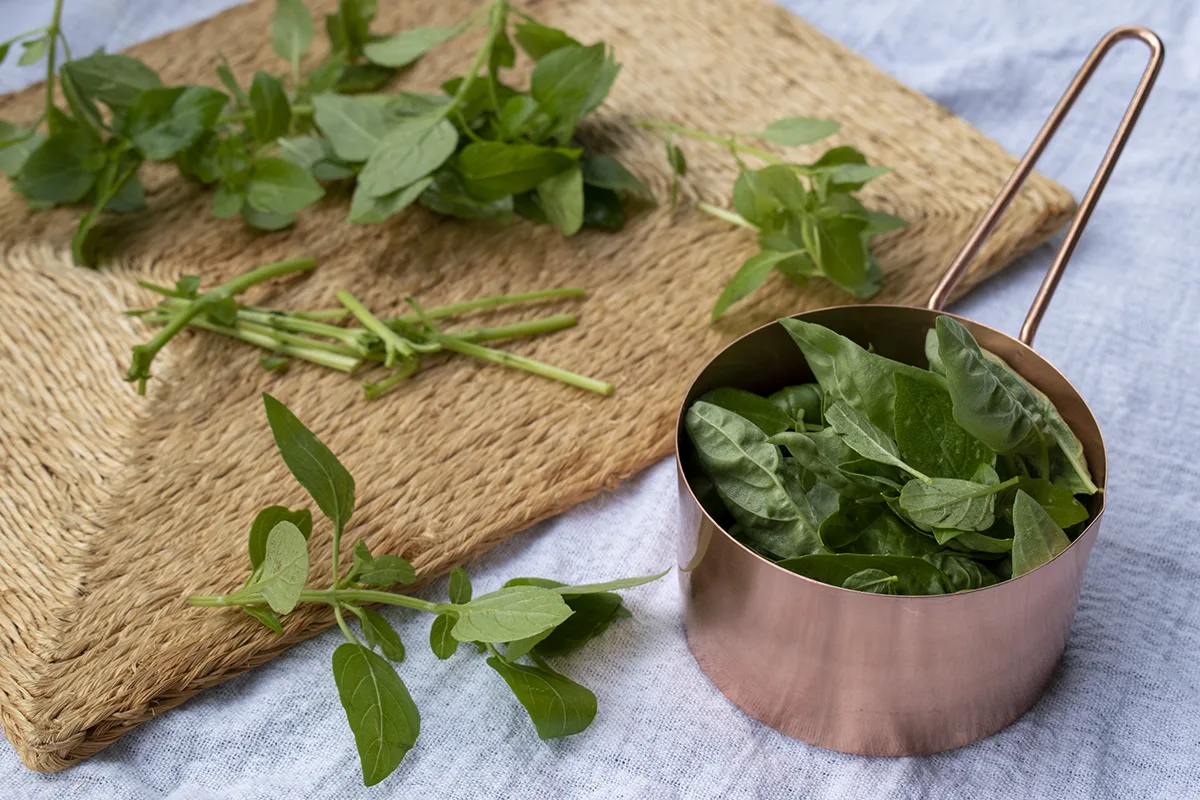
The only time I don’t use the ratio is when I’m making a syrup using flower petals, say lavender or rose. Then I will use a quarter cup of petals instead of a full cup. Everything else is the same.
Preserving the Oils for the Best Flavor
Some recipes call for you to place the herbs in the water and heat both simultaneously, often bringing them to a boil. I don’t like this method, as the natural oils in herbs that give them their distinctive flavors are highly volatile and easily destroyed by too much heat. This can lead to weird flavors or bitterness.
We’re going to do things a bit differently because we like fancy foodstuffs that taste amazing.
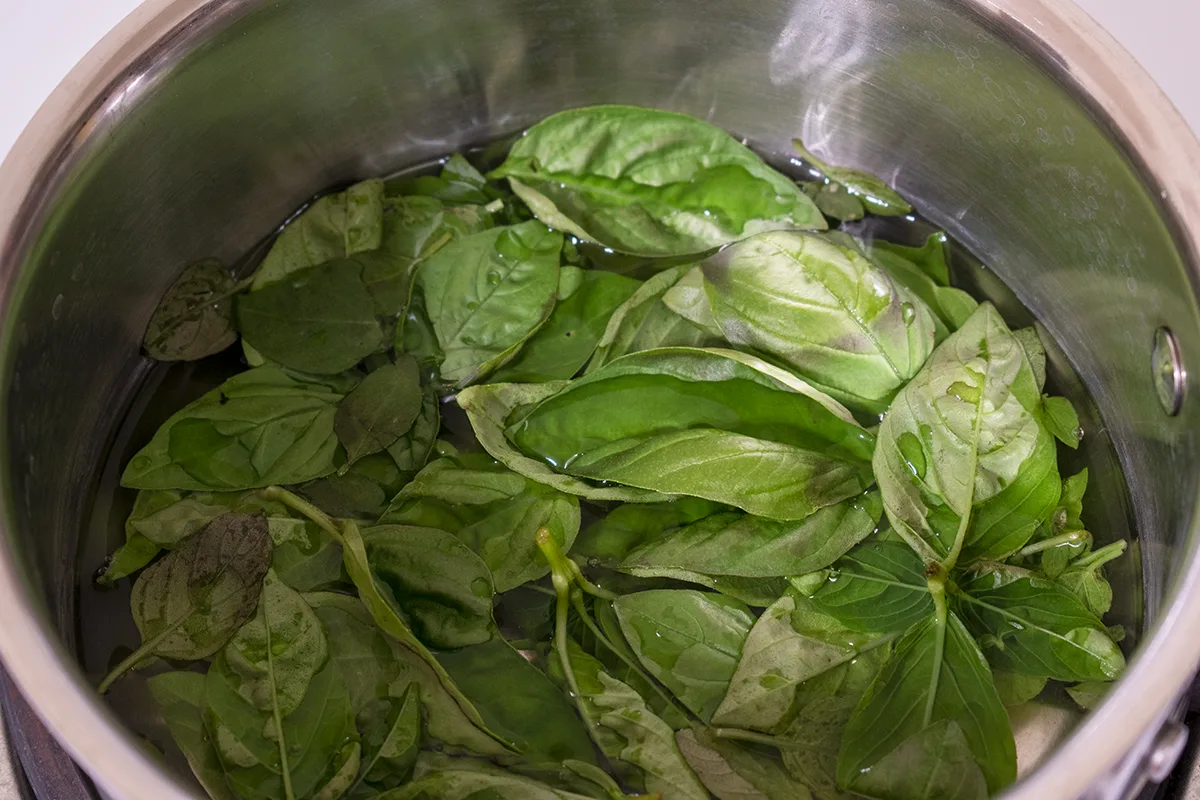
- When making herbal syrups, we will bring the water to a boil with the lid on. Once the water is boiling, turn off the heat, remove the pan from the burner and quickly add the herbs to the pan, and replace the lid.
- Set a timer for fifteen minutes.
- Making herbal syrups this way will capture some of those delicate, flavorful oils we talked about in the steam, which will condense on the top of the lid. (Sort of like distilling.) Once the time is up, lift the lid over the pan and let the condensed steam dribble back into the pan. There’s plenty of flavor there.
- Strain your herbal infusion using a fine mesh strainer. Return the herb-infused water to the pan and add a cup of sugar. Return the pan to the burner. Heat the infused water and sugar over medium heat until the sugar is completely dissolved. Continue gently heating until the syrup just begins to simmer. Turn off the heat and remove the pan from the burner.
- Cover with the lid and let the syrup cool to room temperature before using it.
Storing and Using Herbal Syrups
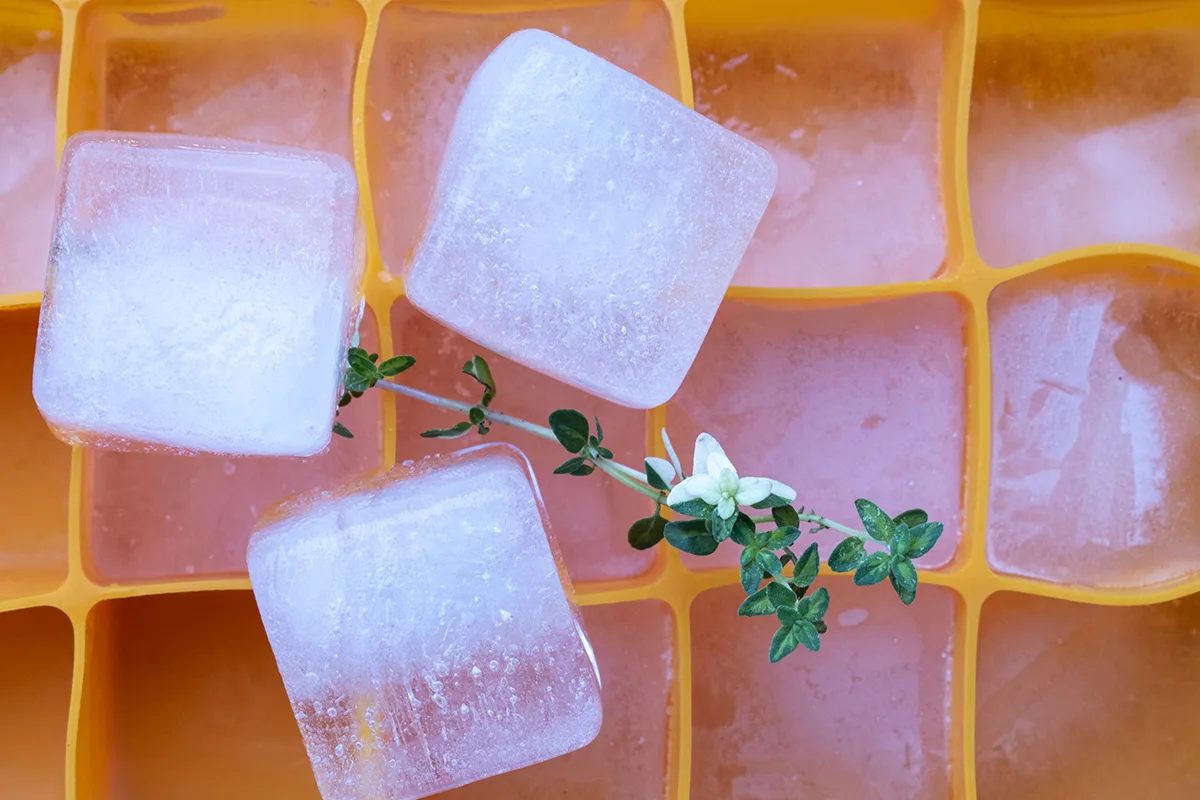
The syrup will keep at room temperature on your counter for a week and in the fridge for a month. You can also pour the syrup into ice cube trays to freeze. Once frozen, store them in a plastic zip-top bag. If you freeze them, you will lose that nice syrupy consistency but maintain the flavor. Herbal syrup ice cubes are a great way to flavor lemonade and iced tea.
The flavor is best when the syrup is at room temperature.
If you store them in the fridge, pull them out to warm up about an hour before making killer cocktails or the-worlds-best mint lemonade.
What to Do with Herbal Syrups
Okay, great, Tracey. I think I’ve got the hang of this. But, now that I have all of these delicious, flavorful syrups, what do I do with them?
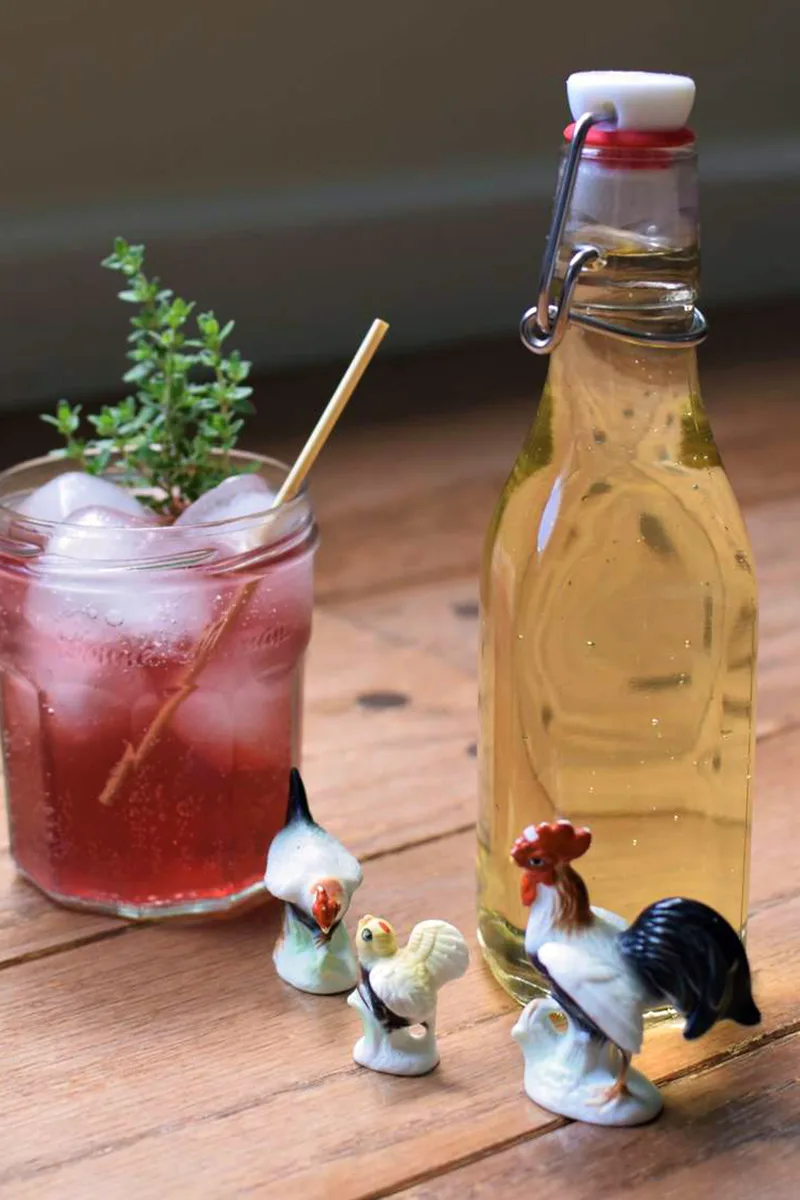
I’m so glad you asked. Here are a few ideas to get you started.
- Add your syrups to lemonade or iced tea for a sweetener that will kick up the flavor a notch. Mint lemonade is heavenly, as are lavender and basil.
- Make some killer popsicles that go beyond your standard frozen fruit juice. A personal favorite in our house is blueberry basil and lime popsicles.
Blueberry Basil & Lime Popsicles
- 2 cups of fresh or frozen blueberries
- 6 limes, juiced
- 1 cup of basil syrup
- 1 cup of water
- Blend all ingredients in a blender until pureed. Pour into popsicle molds and freeze. Enjoy on the hottest, grossest, muggiest days of summer.
(Check out my article with tons more fantastic popsicle recipes to keep cool when you’re just done with summer.)
- Add herbal syrups to your switchel instead of honey.
- Use your fancy syrup to flavor water kefir, ginger bug soda or homemade kombucha.
- Take your craft cocktails to another level with freshly made herbal syrups.
- If you take sweetener in your coffee, try a spoonful of herbal syrup some morning. A few herbs that taste surprisingly good in coffee are rosemary, lavender, and mint.
- And tea drinkers, if you’ve never made a London Fog, you don’t know what you’re missing.
- Add herbal syrups to homemade ice cream and sorbets.
- Create extraordinary buttercream icing by swapping out milk for an herbal syrup.
Since I got into making herbal syrups, I’ve found that if I keep the jars front and center in the fridge (where you can see them), ideas naturally spring to mind.
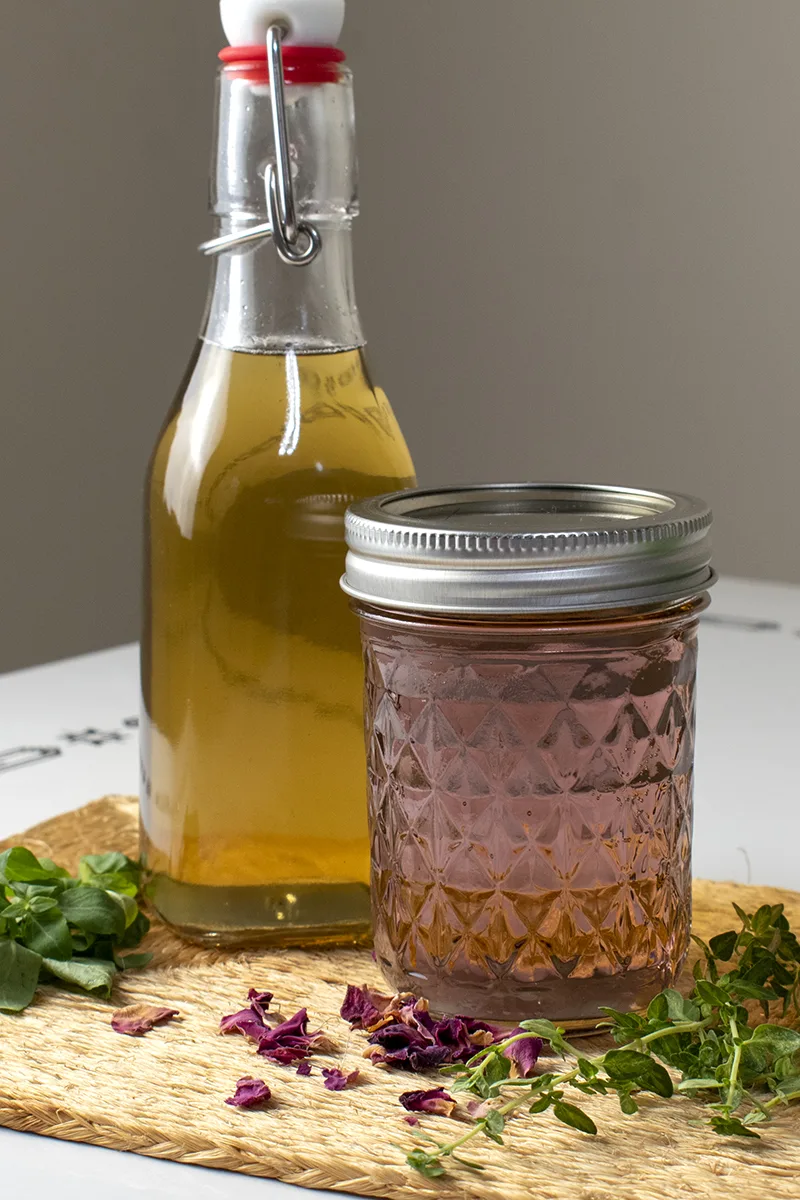

Get the famous Rural Sprout newsletter delivered to your inbox.
Including Sunday ramblings from our editor, Tracey, as well as “What’s Up Wednesday” our roundup of what’s in season and new article updates and alerts.

